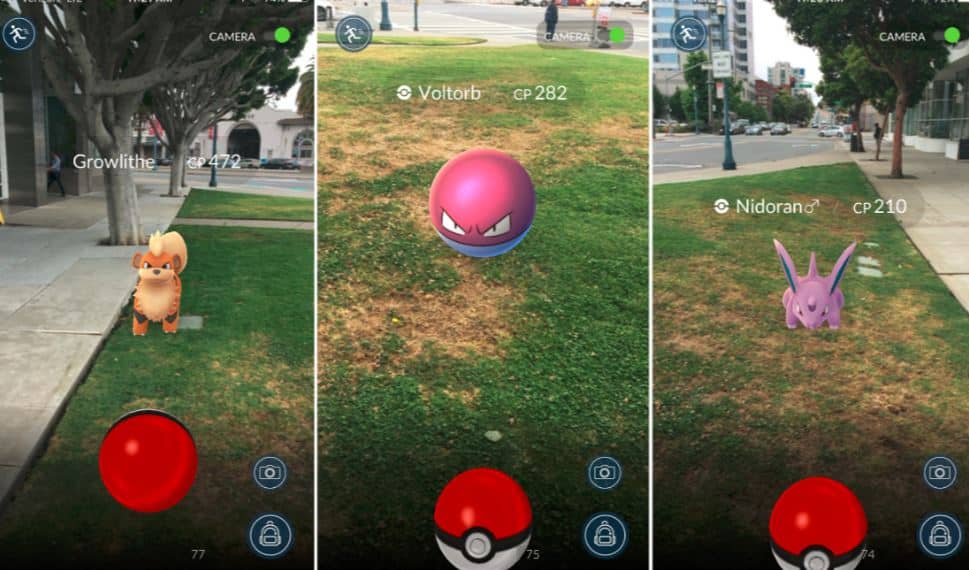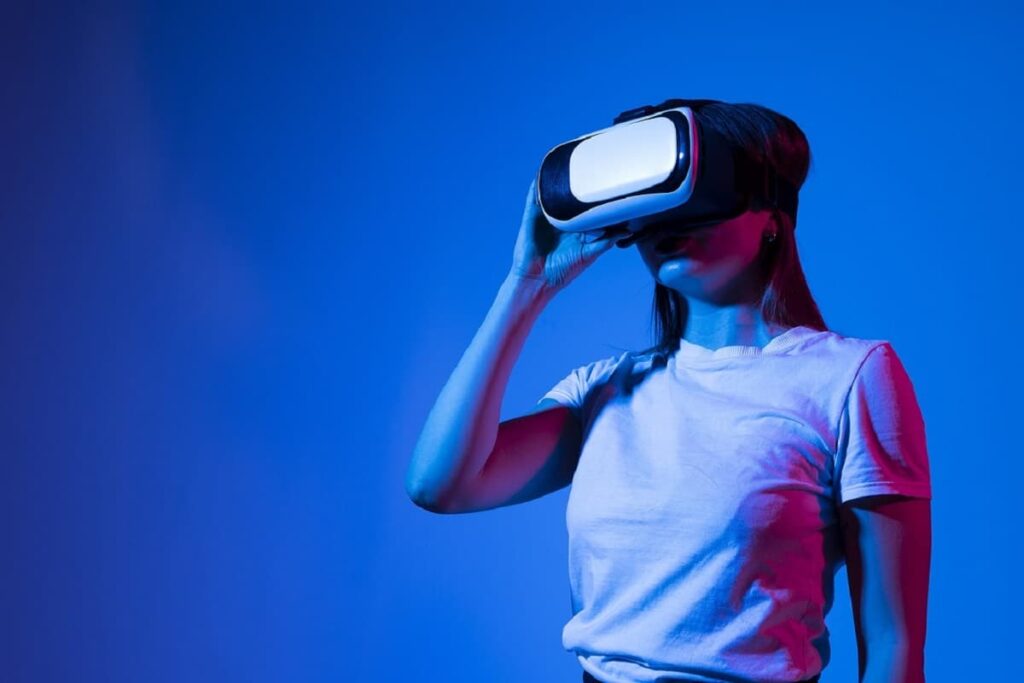Investing in Augmented Reality and Pokémon Go
Table of contents

A few months ago we published an article titled “Is Augmented Reality the Biggest Opportunity Ever?” in which we highlighted how secretive startup Magic Leap took in the largest Series C funding round ever recorded of $827 million. The first mass market implementation of augmented reality (or AR) just took the world by storm with the introduction of a smartphone app called “Pokemon Go” from Nintendo.
If you don’t know what Pokemon Go is, or could really care less, it’s as simple as this. You view the world through your smartphone video camera with the smartphone displaying what you point it at (similar to when you shoot a video) but now little creatures appear as seen below:
That’s it. That’s all you really need to know about the Pokemon Go app.
Now this app did nothing short of dominate every headline over the entire globe due to its immediate popularity that has simply been unprecedented. The prior success of the Pokemon brand, combined with people’s present inclination to walk around with their faces glued to their smartphones, drove the sheeple of the world absolutely nuts making the Pokemon Go app receive more usage now than Facebook with almost as many active users as Twitter, all in the space of just 2 weeks time.
Now the first question that may come to your mind is just how can I invest in the Pokemon Go craze and make some money? However the real question you should be asking here is, how can I invest in the amazing future of augmented reality? Let’s answer both of these questions.
Investing in Pokemon Go
To answer this question we need to look at the underlying technology powering Pokemon Go. Nintendo, a $43 billion Japanese company, has partial ownership over The Pokemon Company which owns all the intellectual property and rights for the Pokemon Go brand. A private company called Niantic owns the augmented reality engine that they’ve been using on some less successful augmented reality implementations like Ingress. Niantic has taken in investments from Google, Nintendo, and The Pokemon Company. And finally, a startup called Unity Technologies provides the gaming engine which allows them to scale this game across the globe. Unity just took in a $181 million funding round giving them a valuation of 1.5 unicorns. Of these 3 companies, you can only invest in one as a retail investor. Nintendo trades on the Tokyo Stock Exchange (TYO:7974) and in the U.S. as an ADR (OTCMKTS:NTDOY).
Investing in Nintendo
The first thing to note here is that Nintendo owns or partially owns 27 subsidiaries, one of which is Pokemon Co. of which they own just 32%. That’s a pretty important piece of information to know. Another thing to note is that Nintendo hasn’t exactly been blowing investors away with sales growth. Here’s a look at their revenues over the past 5 years (in Yen):
We don’t even need to do a currency conversion here to see that over the past 4 years, Nintendo’s revenues have nearly halved, yet their share price is up more than +119% in less than two weeks just based on their 32% ownership of the Pokemon subsidiary, giving Nintendo a market cap of over $42 billion. Here’s what a recent article on Marketwatch has to say about the effect of Pokemon Go on Nintendo:
For Pokémon Go to have a meaningful impact Nintendo’s profits, the game needs to hit a minimum of 15 billion to 20 billion yen ($140 million to $196 million) turnover per month. The estimated daily turnover for Pokémon Go on the first day was around 400 million to 500 million yen ($3.9 million to $4.9 million).
So Nintendo had 4.5 billion USD in revenues in 2015, which was half that of 2011. In order for Nintendo to just get revenues back to where they were 5 years ago, they would need to achieve $12.3 million in revenues per day from the Pokemon app which would represent just 32% of what the subsidiary is fetching? Unfortunately, Nintendo doesn’t break down their revenues by segment so we’re going to have to guess that with their track record over the past 4 years of plummeting revenues, any future revenues gains are attributed to the success of Pokemon Go.
Investing in Augmented Reality
The advent of Pokemon Go brought out all the pundits who started throwing up crazy ways to invest in augmented reality like buying telecom stocks because data downloads would increase or recommending that you buy shares in Google because as we told you before, “investing in Google” is the panacea for investing in every technology under the sun. The truth is that most of the real investment opportunities for augmented reality are off limits for retail investors. There are hundreds of private companies playing in this space, such as these 6 exciting AR/VR companies we highlighted last month.
While the first implementations of augmented reality that will draw investors’ attention will be in the gaming space as we’ve just observed, there are so many incredible possibilities outside of gaming. Imagine that the hardware becomes a variation of Google Glass that doesn’t allow recording (which was one of the things people weren’t comfortable with about Google Glass) but has sensors that can read everything and overlay the real world with useful virtual content like:
- Virtual tour guides for tourists
- Directions streamed live as you walk
- Virtual street signs on each corner that are placed such that you never need to look for a real street sign ever again
- Exercise monitors streaming live stats to you as you exercise
- Real-time price comparisons when shopping in bricks-and-mortar outlets
- People’s LinkedIn profiles appearing automatically at a networking event
- Ridiculously real-time dating apps
- Cartoon animals that you can throw balls at and go crazy about
The device is controlled with hand gestures and actually looks fashionable with different skins just like smartphone covers. No need to walk around like a phone zombie anymore. Pokemon Go becomes just one of hundreds of augmented reality games you can choose from to play at any time and in any place. Some of these games will be restricted only to certain geographical locations allowing for the integration of exciting real-world props into games. The possibilities are truly mind blowing.
Conclusion
Nintendo has put up no barriers to entry for augmented reality competitors at all. They merely own part of the Pokemon brand. Is it a good idea to invest in the future of these cute little cartoon creatures? Maybe, but it pales in comparison to what we’re going to see coming soon from all the augmented reality startup companies that are quietly ramping up. Don’t get too excited everyone, because you ain’t seen nothing yet.
Sign up to our newsletter to get more of our great research delivered straight to your inbox!
Nanalyze Weekly includes useful insights written by our team of underpaid MBAs, research on new disruptive technology stocks flying under the radar, and summaries of our recent research. Always 100% free.
















